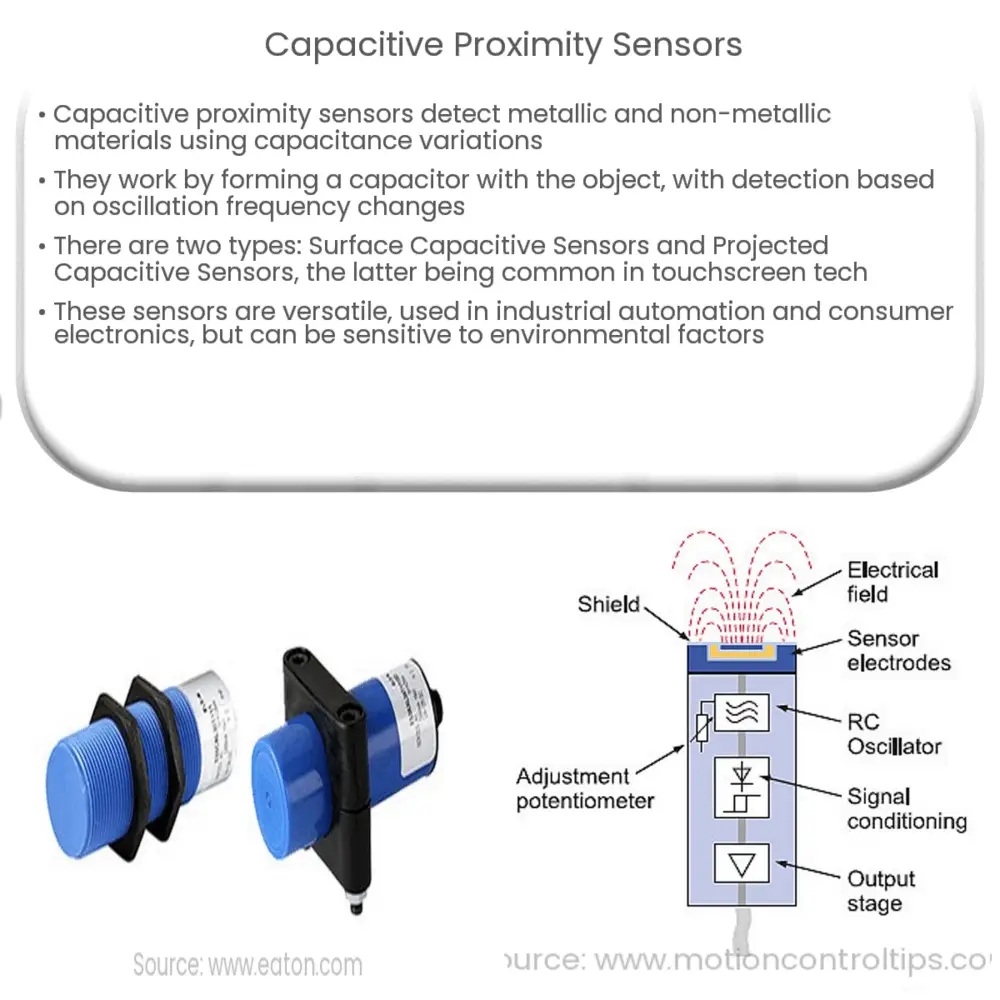Explore the fundamentals of capacitive proximity sensors, their types, applications, advantages, limitations, and future trends.

Introduction to Capacitive Proximity Sensors
Capacitive proximity sensors are a significant type of sensor used in various industries due to their ability to detect both metallic and non-metallic materials. These sensors operate on the principle of variation in capacitance.
A capacitive sensor consists of two main parts: a capacitance plate and an oscillating circuit. The plate and the object form a capacitor, with the non-conductive material serving as the dielectric. The presence of an object is detected based on changes in oscillation frequency due to changes in capacitance.
Working Principle of Capacitive Proximity Sensors
The fundamental operation of capacitive sensors involves changes in capacitance. When no object is near the sensor, the capacitance is minimal, and the oscillation frequency is at its highest. As an object approaches the sensor, the capacitance increases, causing the frequency of oscillation to decrease. This change in frequency is processed by the sensing circuit, triggering an output signal that indicates the presence of the object.
Types of Capacitive Proximity Sensors
Capacitive proximity sensors are primarily categorized into two types:
- Surface Capacitive Sensors: These sensors measure the capacitance between the sensing object and the sensor surface. They are widely used in detecting the presence or absence of solid materials and the level of liquid in a container.
- Projected Capacitive Sensors: This type of sensor projects an electric field beyond the sensor surface, allowing for a larger detection area and more flexibility in positioning. These sensors are commonly used in touch screen technology.
Applications of Capacitive Proximity Sensors
Capacitive proximity sensors are employed in a variety of applications due to their versatility in detecting different types of materials, including:
- Industrial Automation: They are used for object detection, counting, and sorting tasks, contributing significantly to automating industrial processes.
- Consumer Electronics: Capacitive sensors are key components in touch screen technology, providing an interactive user interface in smartphones, tablets, and many other devices.
- Sensitivity: These sensors can detect a wide variety of materials, including metallic and non-metallic objects, and liquids. This versatility contributes to their widespread use.
- Non-contact sensing: Capacitive sensors can detect objects without requiring physical contact, which can be beneficial in applications where the object might be damaged by contact or where cleanliness is a priority.
- Sensitivity to environmental changes: Factors like humidity, temperature, and even the presence of dust can affect the performance of capacitive sensors.
- Interference: These sensors can be affected by electromagnetic interference or radio frequency interference, which may lead to inaccurate readings.
Advantages and Limitations of Capacitive Proximity Sensors
Capacitive proximity sensors offer numerous advantages that make them a popular choice across different industries.
Despite their benefits, capacitive sensors also have some limitations:
Innovations and Future Trends
Recent innovations have enhanced the performance and capabilities of capacitive sensors. One of the advancements is the use of nanotechnology, which has significantly improved sensitivity and detection capabilities. Moreover, development in sensor design and the integration of artificial intelligence (AI) has opened new possibilities for intelligent sensing and more sophisticated applications.
Conclusion
In conclusion, capacitive proximity sensors play a crucial role in various sectors, including industrial automation and consumer electronics, thanks to their ability to detect a wide range of materials without requiring physical contact. While they have certain limitations, continuous advancements in technology are addressing these drawbacks and expanding their potential applications. As technology continues to evolve, capacitive sensors are expected to remain a significant part of our digital future, enabling smarter and more efficient systems.

